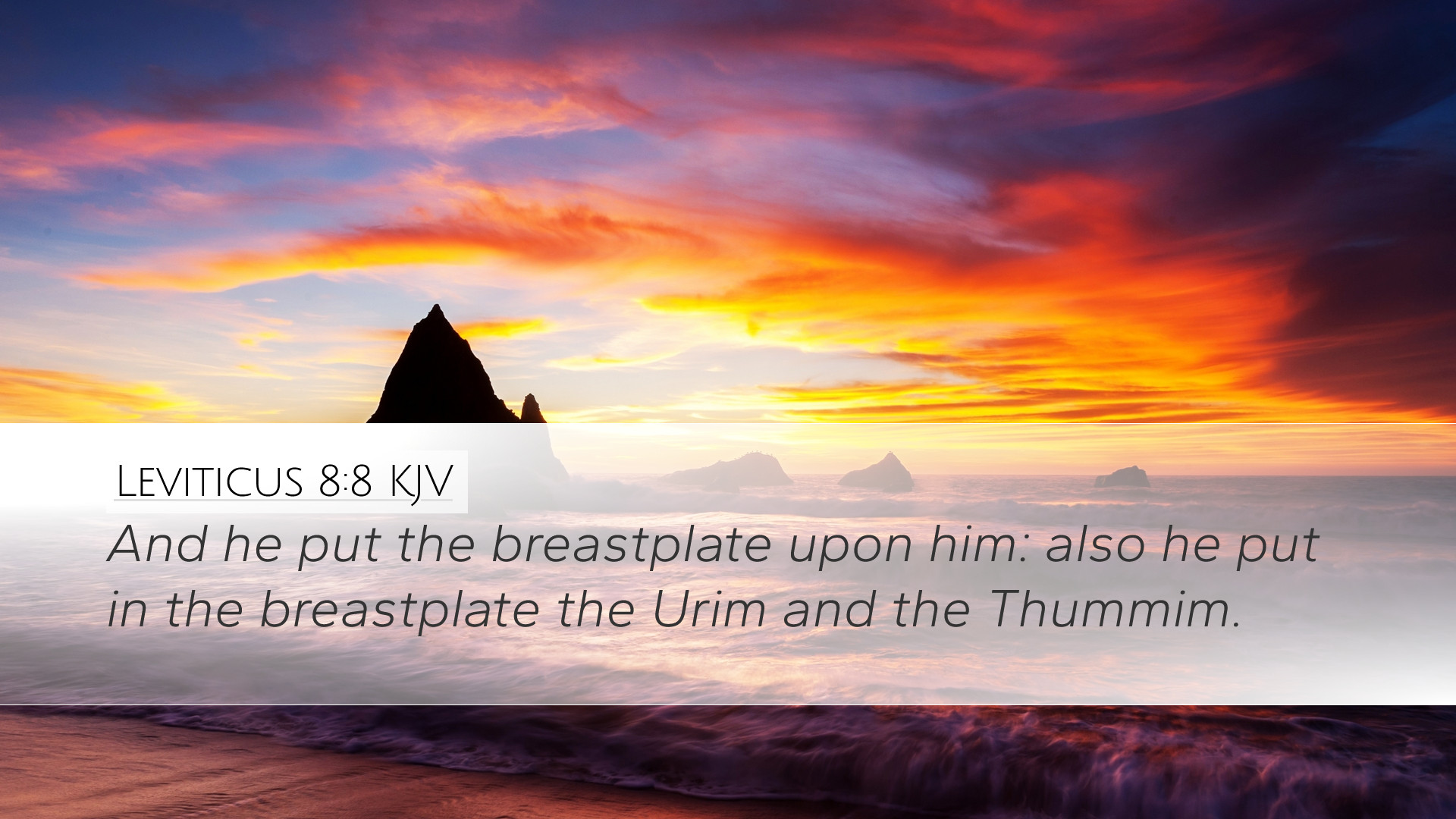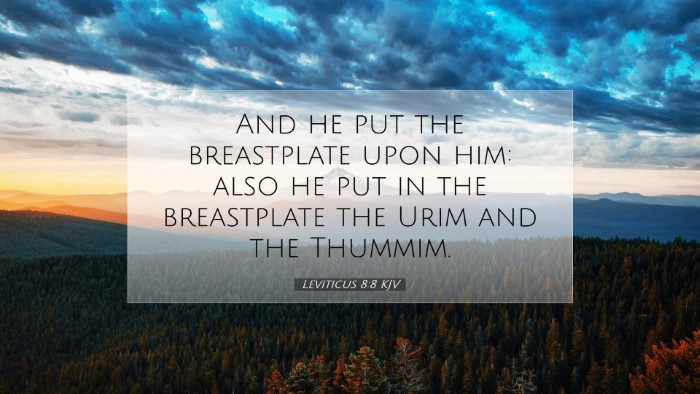Commentary on Leviticus 8:8
Leviticus 8:8 states: "And he put the breastplate upon him: also he put in the breastplate the Urim and the Thummim."
Textual Analysis
This verse falls within a pivotal moment in Israel’s history when God establishes the priesthood for the first time with Aaron and his sons being consecrated for service. The act of placing the breastplate on Aaron symbolizes the high priest's role in mediating between God and His people.
Insights from Matthew Henry
Divine Appointment: Matthew Henry highlights that the priesthood was divinely appointed, stating that Aaron's garments were not merely for beauty but designed to signify and sanctify the spiritual responsibilities of the priest. Each element, especially the breastplate, was crucial for the high priest's duties.
Urim and Thummim: Henry emphasizes that the Urim and Thummim, placed within the breastplate, served as instruments for discerning God’s will. This suggests the importance of divine guidance in decision-making.
Insights from Albert Barnes
Symbolism of the Breastplate: Albert Barnes comments that the breastplate represents the twelve tribes of Israel, indicating that the high priest carried the people before God. The mention of 'Urim and Thummim' signifies the mechanisms through which the priest would discern the judgments of the Lord.
Mediator Role: He elaborates on the role of the high priest as a mediator, connecting the divine with the temporal, thereby underscoring the importance of intercession in the priestly office.
Insights from Adam Clarke
Function and Composition: Adam Clarke describes the breastplate as a sacred instrument fabricated with great care, reflecting the serious nature of the high priest’s role. The materials used were not only decorative but symbolic of God's glory and His people's status.
Significance of Divine Revelation: Clarke stresses that the Urim and Thummim were likely used to receive direct revelations from God, illustrating how God's communication was integral to the leadership of Israel.
Theological Implications
The appointment of Aaron as high priest, as depicted in Leviticus 8:8, illustrates several underlying theological themes:
- Sovereignty of God: The selection and consecration of priests authenticate God's control over Israel's worship and leadership.
- Intercession: The ritual highlights the need for representation before God, a role that foreshadows Christ's ultimate intercession for humanity.
- Holiness: The garments and specific instructions signify the holiness required for approaching God, reminding us of our need for purity and reverence in worship.
Practical Applications
For pastors, students, and theologians, Leviticus 8:8 offers profound lessons:
- Understanding Leadership: The importance of godly leadership and adherence to God’s calling resonates throughout this passage, encouraging church leaders to seek divine guidance.
- Seeking God’s Will: The Urim and Thummim remind believers today to seek God’s wisdom prayerfully, trusting His direction in all decisions.
- Appreciating the Mediatorial Role: Recognizing Jesus Christ as our High Priest encourages a deeper understanding of His sacrifice and ongoing intercession for us.


